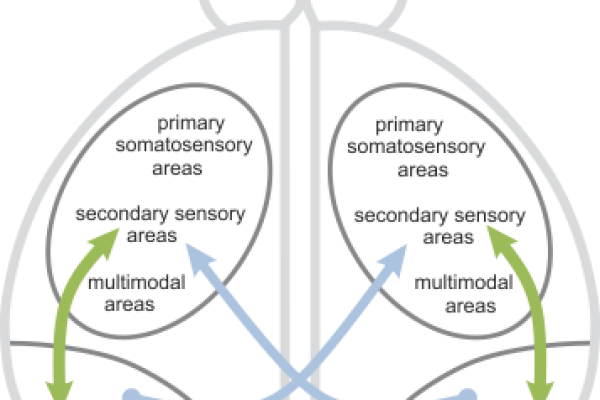2015-09-03

In birds which do not possess a corpus callosum the anterior commissure (AC) constitutes the main interhemispheric pathway at telencephalic level. However no detailed description of the topographic organization of the AC has been performed till now. This information is not only necessary for a better understanding of interhemispheric transfer in birds, but also for a comparative analysis of the evolution of commissural systems in the vertebrate classes. Therefore researchers from the Biopsychology Department examined the fiber connections of the AC. The main differences in the interhemispheric connectivity between birds and mammals are found at two levels of structural organization. First, the AC in birds differs from the corpus callosum and the AC of mammals in its proportion of homotopic reciprocal to heterotopic unidirectional projections. In contrast to the situation in mammals, in birds only a small amount of cells interconnect the two hemispheres in a homotopic and reciprocal fashion. Instead, most of the cells project heterotopically and in unidirectional manner. Second, in birds the absolute majority of pallial areas do not participate by themselves in interhemispheric exchange. Instead, a rather small cluster of cells is key for commissural interactions. Thus, the colloquial statement that birds are “natural split-brains” is wrong, when the pallial areas are considered that interhemispherically interact via the AC. It is true, however, when taking into account how small the proportion of pallial neurons is that constitutes interhemispheric exchange.

In birds which do not possess a corpus callosum the anterior commissure (AC) constitutes the main interhemispheric pathway at telencephalic level. However no detailed description of the topographic organization of the AC has been performed till now. This information is not only necessary for a better understanding of interhemispheric transfer in birds, but also for a comparative analysis of the evolution of commissural systems in the vertebrate classes. Therefore researchers from the Biopsychology Department examined the fiber connections of the AC. The main differences in the interhemispheric connectivity between birds and mammals are found at two levels of structural organization. First, the AC in birds differs from the corpus callosum and the AC of mammals in its proportion of homotopic reciprocal to heterotopic unidirectional projections. In contrast to the situation in mammals, in birds only a small amount of cells interconnect the two hemispheres in a homotopic and reciprocal fashion. Instead, most of the cells project heterotopically and in unidirectional manner. Second, in birds the absolute majority of pallial areas do not participate by themselves in interhemispheric exchange. Instead, a rather small cluster of cells is key for commissural interactions. Thus, the colloquial statement that birds are “natural split-brains” is wrong, when the pallial areas are considered that interhemispherically interact via the AC. It is true, however, when taking into account how small the proportion of pallial neurons is that constitutes interhemispheric exchange.